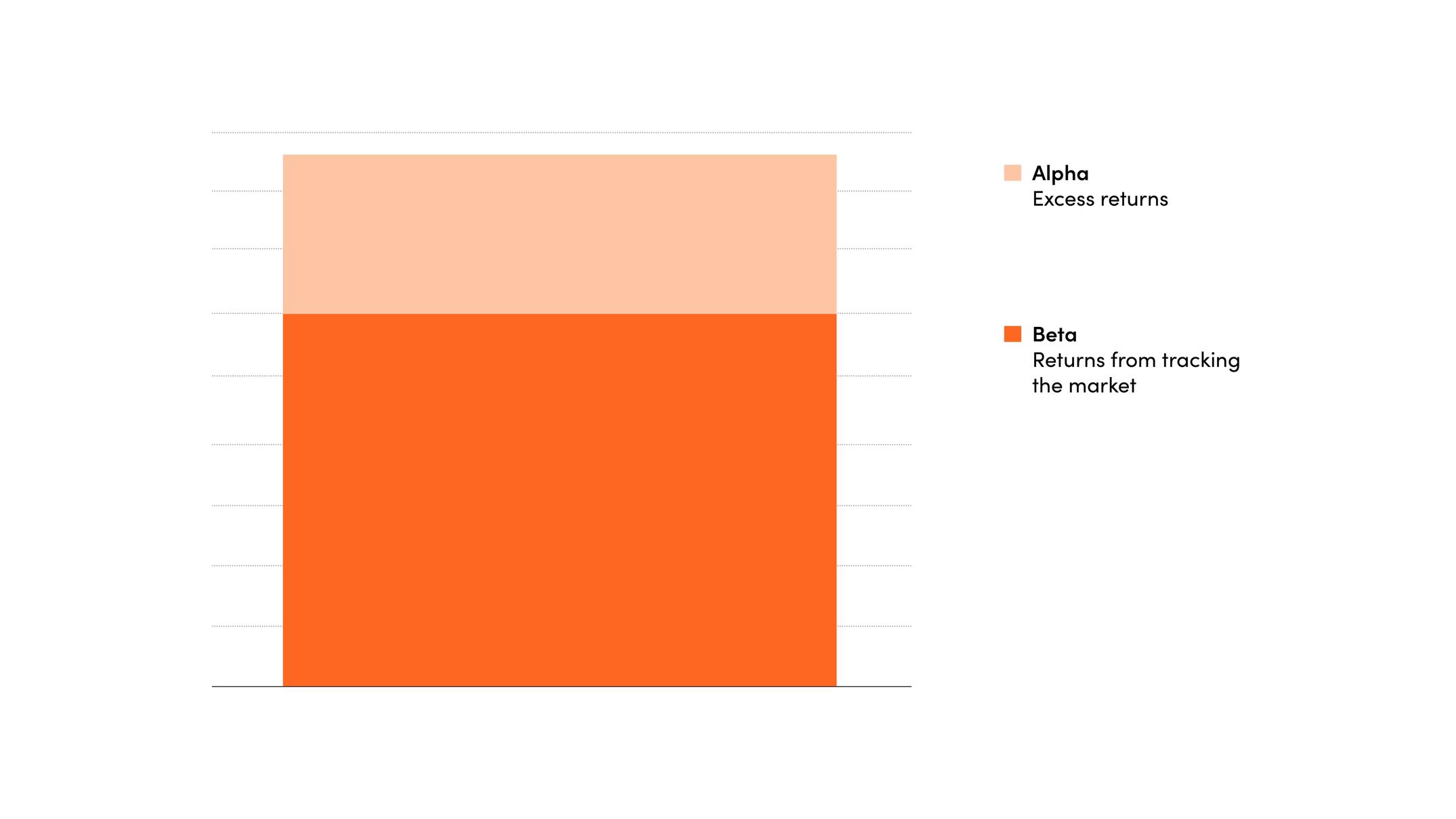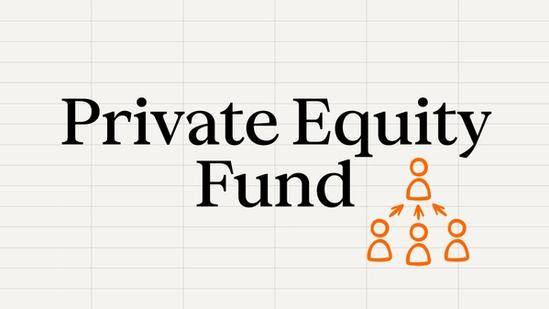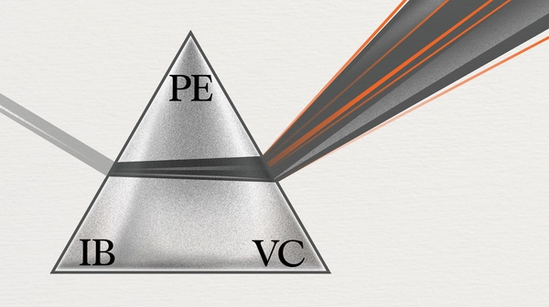What Is Alpha In Investing?


How EQT and other PE firms aim to define and generate alpha – returns that outperform risk-adjusted benchmarks.
- Alpha is the risk-adjusted excess return generated by an investor.
In the world of finance and investing, “alpha” is shorthand for “outperformance”, the elusive result that signals an investor’s unique skill.
To understand alpha, you first need to understand beta. Beta measures volatility: a beta of 1 means the investment moves in line with the market; a beta higher than 1 means it’s more volatile. Higher volatility tends to indicate more risk and, generally, higher risk means a higher potential return.
Alpha is the return an investment generates above what would be expected for its risk level. So, in public markets, it’s the difference between expected return (based on beta) and actual return.

Imagine a public equity fund delivers a 10 percent return and its benchmark index – the S&P 500, say – delivers 8 percent over the same period. If both investments carried similar risk (e.g. a beta of 1), the fund generated 2 percentage points of alpha.
An alpha of zero means a manager has not outperformed their benchmark. In that case, an investor may as well have passively tracked an index, rather than paying for active management. A negative alpha signals underperformance, so an investor would have been better off with a passive approach, without even accounting for the management fee.
How do you measure alpha in private equity?
Alpha is fairly straightforward to calculate in public markets, where data is transparent and investment benchmarks are clear. Private markets, however, don’t operate with the same visibility or level of standardization. There are no daily prices, no unified benchmarks and no easy ways to measure portfolio risk over time.
For this reason, private equity (PE) investors often rely on metrics like IRR (Internal Rate of Return), MOIC (Multiple On Invested Capital) and TVPI (Total Value to Paid-In Capital) to assess performance. However, these measures don’t isolate alpha, because they don’t consistently control for risk, leverage or market exposure.
Instead, the most common methods of isolating alpha in PE are peer benchmarking and public market equivalents.
Blind pool peer benchmarks: This method compares a manager’s performance to similar PE funds. Generally, if a fund lands in a higher percentile, that indicates alpha relative to the rest of the group.
For a fair comparison, funds should be similar in strategy, size, sector and vintage year. For example, a 2018 mid-market European buyout fund shouldn’t be benchmarked against a 2015 U.S. growth equity fund. However, the narrower the scope, the smaller the pool of funds. That means the benchmark may not be as reliable: it could be skewed by just one or two outlier performers.
Public market equivalents (PME): These models compare the performance of a PE investment to the outcome if the same money had been invested – at the same pace – in a public benchmark investment. To calculate this, you would take a PE fund’s cash flows (capital calls and distributions), model their performance in a public market index with comparable themes over the same time period, and then compare the ending value to the fund’s actual performance.
This method can be skewed by varying volatility, reinvestment assumptions and differences in the liquidity of investments. It can also be challenging to find a suitable public market equivalent, especially for structures such as buyout funds and venture funds.
Risk-adjusted return models: This approach is less common and more rigorous. Multi-factor regression models sort between factors that contribute to returns, attempting to isolate those that can’t be explained by market traits.
The issue is that these models rely on lots of assumptions. That’s because PE valuations aren’t regularly updated, risk measurements aren’t readily available and real-time visibility into portfolio updates is rare.
How do private equity managers produce alpha?
- Sourcing advantage: A manager with broader networks, wider geographic reach, or deeper sector specialization may be able to identify and invest in opportunities before they’re widely discovered. Generally, that means more attractive prices and room for their value to grow.
- Operational value creation: Unlike public market investors, PE firms can help drive performance directly by working with portfolio companies to improve margins, expand into new markets or optimize operations.
- Competitive fundraising: PE firms can create a performance edge by raising more capital on better terms than their peers with similar track records. They can strike better deals based on brand strength, innovative fund structures, access to new investor bases and disciplined relationship management.
- Strategic capital deployment: PE firms can structure deals to maximize returns, like smart use of leverage, dividend recapitalization or bolt-on acquisitions that increase scale and valuation multiples.
- Exit timing and positioning: Planning and executing an optimal exit, whether through IPO, strategic sale or secondary, can significantly help influence returns and amplify alpha.
ThinQ by EQT: A publication where private markets meet open minds. Join the conversation – [email protected]





